Unit 3: Case study: Impact on Ukrainian cultural heritage
As the news of the Ukrainian war reached the international community, cultural heritage organisations (CHOs) quickly pointed to the need to protect and preserve Ukrainian cultural heritage. Ukraine is home to a considerable number of remarkable cultural monuments that date back 1,000 years ago and that are part of the UNESCO World Heritage List, such as the 11th-century St Sophia Cathedral (Akinsha Konstantin 2022). Currently, in Ukraine, there are more than 140,000 objects of immovable heritage, 2,530 museums and 12 million museum items.
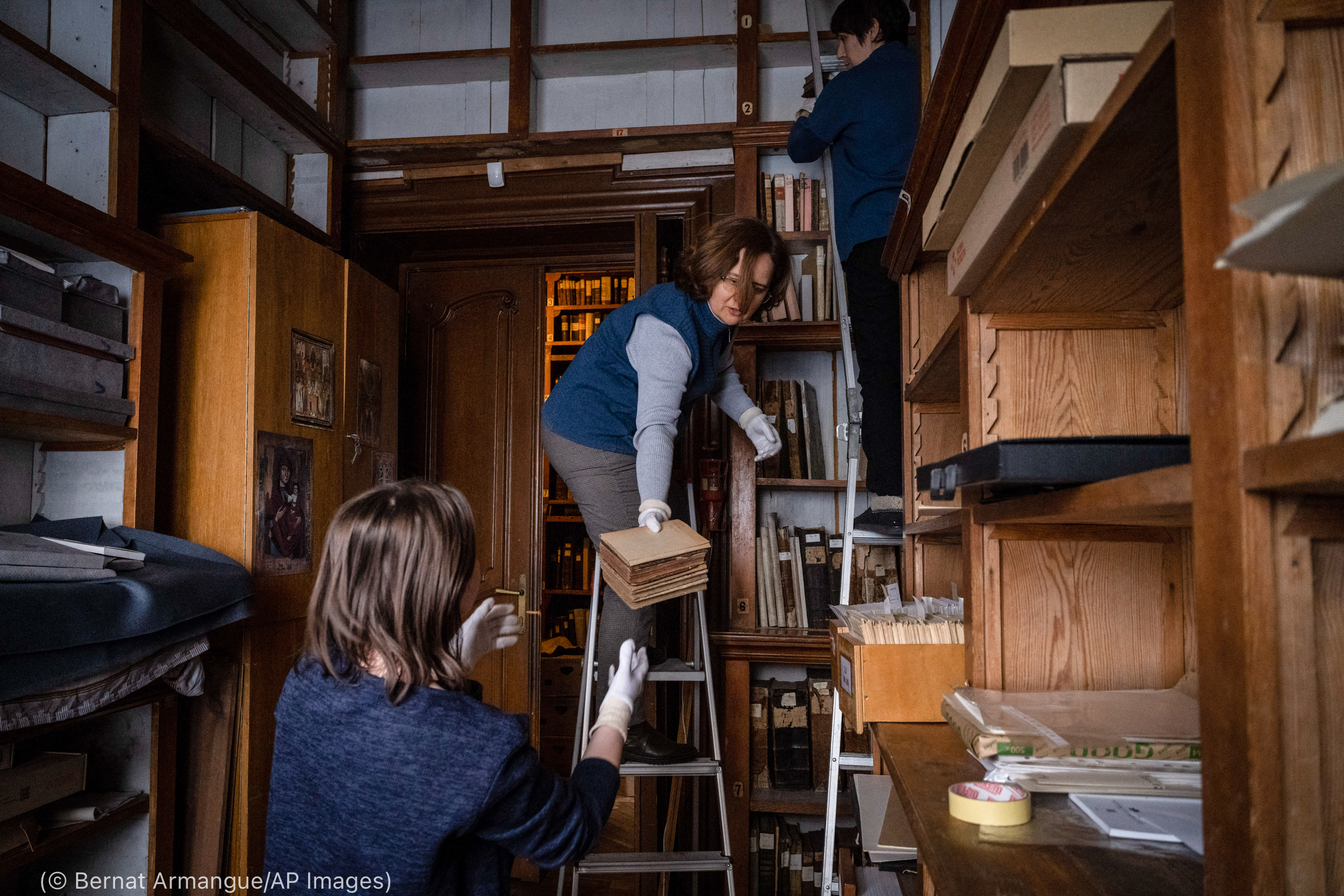
One of the first international organisations that immediately issued a statement regarding its preoccupation with the state-of-art of Ukrainian cultural heritage and CHOs is UNESCO. In its statement, UNESCO called for:
“…respect for international humanitarian law, notably the 1954 Hague Convention for the Protection of Cultural Property in the Event of Armed Conflict and its two (1954 and 1999) Protocols, to ensure the prevention of damage to cultural heritage in all its forms.” (UNESCO statement, February 24, 2022)
Similarly, the International Council of Museums (ICOM) condemned the facts on the ground in Ukraine on the same day as UNESCO, while a few days later, on the 9th of March it issued a statement under the scope as a reminder of the role of CHOs in promoting peace. By emphasising the key conclusions of the 1st ICOM Assembly in Mexico in 1947, ICOM brought back its message conveyed more than seventy years ago but still relevant today:
“We believe that it is of the greatest importance for every nation that the knowledge of the cultures of the various countries forming part of one world should be made more widely known; 2. By these means there will be a broader ground of mutual understanding, for through exchange of cultural knowledge there is a common ground for peace;”
– 1st ICOM General Assembly, Mexico City, November 8, 1947 (ICOM 2022).
The Council of Europe also issued a new Recommendation (CM/Rec (2022)15) in which the role of cultural heritage in human societies,as well as the importance of safeguarding it in times of conflict, is highlighted. More specifically, the Council of Europe urges governments to:
“assist Ukraine as necessary in dealing with the threats to its cultural heritage and its urgent preservation by using all possibilities offered by the Council of Europe’s conventions and legal and technical framework in the area of culture and cultural heritage, as well as in future action plans for Ukraine”
(Council of Europe, May 2022)
In the coming sections, we have prepared a detailed presentation of initiatives undertaken by Ukrainian, European and International CHOs in support of the Ukrainian cultural heritage sector. A closer look will be given to academia-society cooperation in humanitarian crises and how open innovation can contribute to such challenging settings.
Reflection question: Think about the impact a war can have on the cultural heritage of the country in which it is taking place. What about the natural heritage? Can it be affected too? Note down your answer in the reflective diary.
3.1 How CHOs reacted to the crisis
The outbreak of the war has generated a multitude of responses and initiatives regarding the protection and preservation of Ukrainian cultural heritage. Although most of these initiatives are carried out by official institutions and organisations, as the Ukrainian civil society sector is mainly focused on providing humanitarian assistance on the ground, all initiatives, either top-down or bottom-up, face many challenges in preserving endangered heritage.
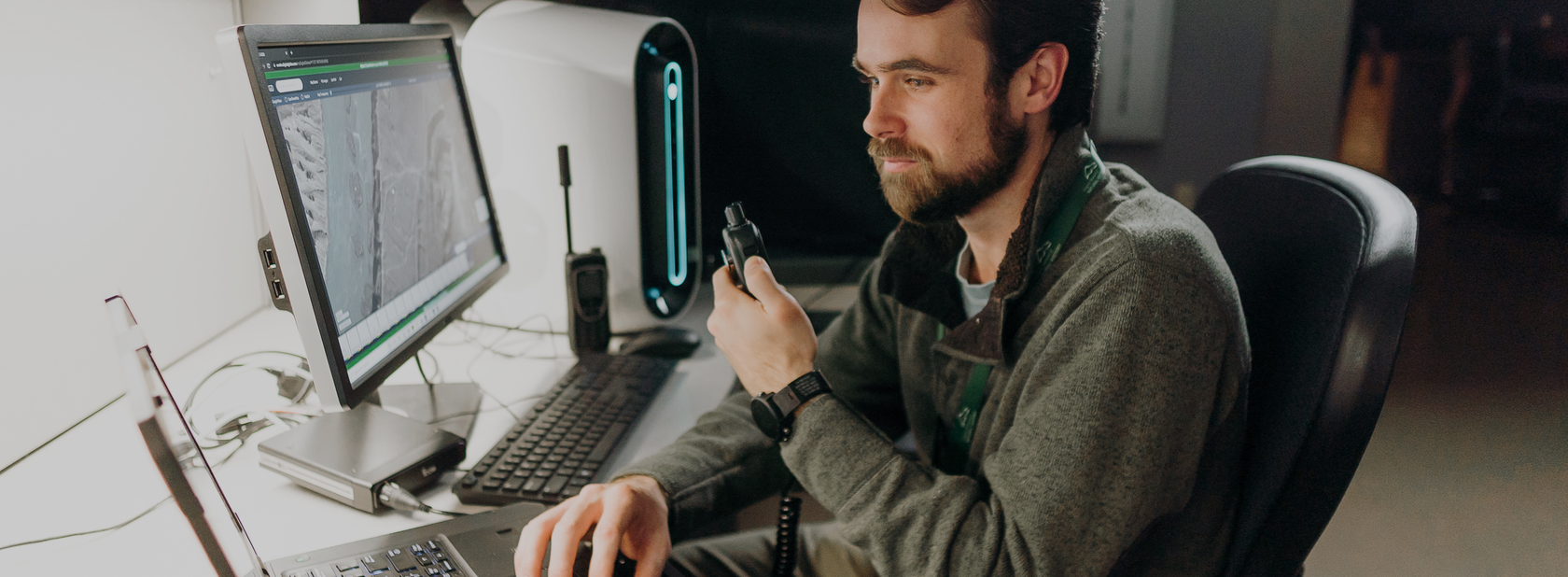
The following sub-sections present a variety of top-down and bottom-up initiatives, ranging from direct humanitarian assistance to cultural heritage protection and preservation undertaken in traditional as well as innovative ways.
3.2 The Ukrainian CHOs’ function during conflict
Following the outbreak of the war, CHOs and ordinary citizens realised the need to protect and preserve their centuries-old cultural heritage. All of the country’s cultural sector has been affected by the conflict, while preoccupation has been expressed for the preservation of the historical centre of Kyiv, the Ukrainian capital, that comprises various historical monuments, museums and works of art as pointed out by the International Council on Monuments and Sites (ICOMOS, March 1, 2022).
As cultural heritage organisations in the eastern part of the country have suspended their activities, or have been targeted and destroyed by the conflict (e.g., Mariupol’s theatre), the city of Lviv in the western part of the country has become a dynamic hub of people coming there to find shelter as well as a safe place to store and preserve tangible and intangible cultural heritage assets. A variety of cultural institutions and youth organisations have been mobilised in order to protect people and cultural heritage under threat.
In particular, the Lviv Municipal Art Centre as well as major theatres of the city of Lviv, such as the Les Kurbas Theater and the Lesia Ukrainka Theater, offer temporary shelter to internally displaced persons arriving there from across the country. Among their humanitarian assistance, these cultural institutions organise crowdfunding campaigns to gather as many resources as possible in order to be able to provide their continuous support. Other cultural institutions that host displaced persons in their spaces are the Hnat Khotkevych Palace of Culture, Lviv Puppet Theater and the City History Center.
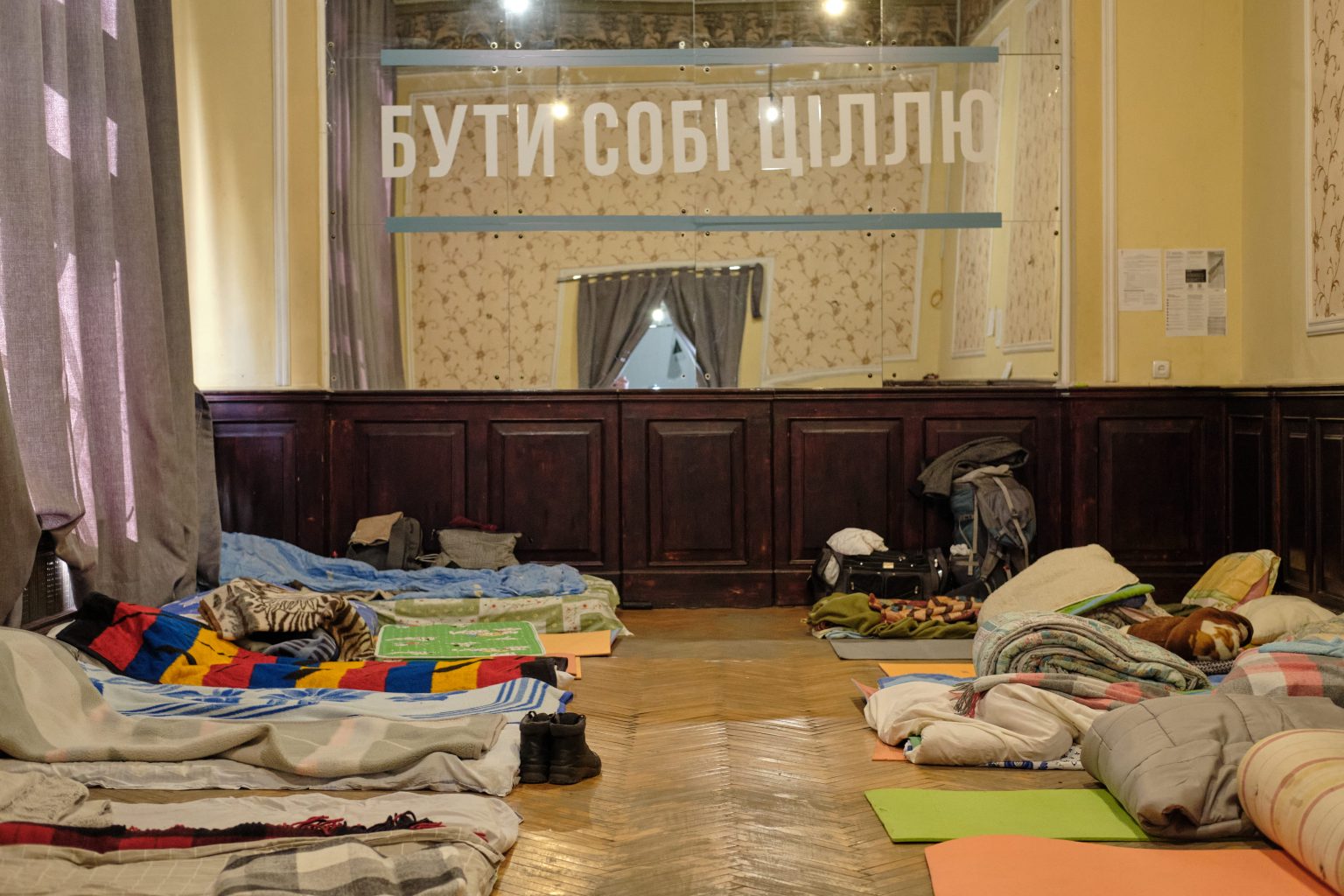
Photo by Nazarius Shore, Inside the Lesia Ukrainka Theater
Apart from Ukrainian CHOs’ initiatives aiming to provide urgent humanitarian assistance, the Lviv Open Lab, a youth space fostering creativity and innovation, has designed a series of activities in which internally displaced children can participate. As dictated by the necessities of the crisis, young participants of the youth lab workshops engaged in creating camouflage nets by collecting the necessary materials through crowdsourcing. This way, by utilising digital tools in tandem with open innovation approaches, CHOs in Ukraine seek to maximise the range of initiatives to safeguard their cultural patrimony as well as to provide much-needed humanitarian aid.
All these initiatives organised in the city of Lviv are being collected and monitored by the Cultural Strategy Institute, which is a municipal institute that aims to support CHOs of the city of Lviv.
Similarly, at the beginning of March, a variety of NGOs and public institutions, most notably the National Museum of the Revolution of Dignity (Maidan Museum) and the “Tustan” NGO, launched a volunteer expert Heritage Rescue Emergency Initiative (HERI). Its aim is to promote the preservation of cultural heritage during the war and guarantee its post-war restoration. The priority areas of HERI’s activity consist of: assisting cultural institutions and their employees; preparing for rapid response to emergencies in the context of armed conflict; protecting museum collections; assessing losses and risks; carrying out primary rescue operations; collecting and systematising information on crimes against cultural heritage; coordination of actions between various authorities at state/municipal levels, museum institutions, cultural institutions, the non-governmental sector, and international organisations on the preservation of cultural heritage and its restoration.
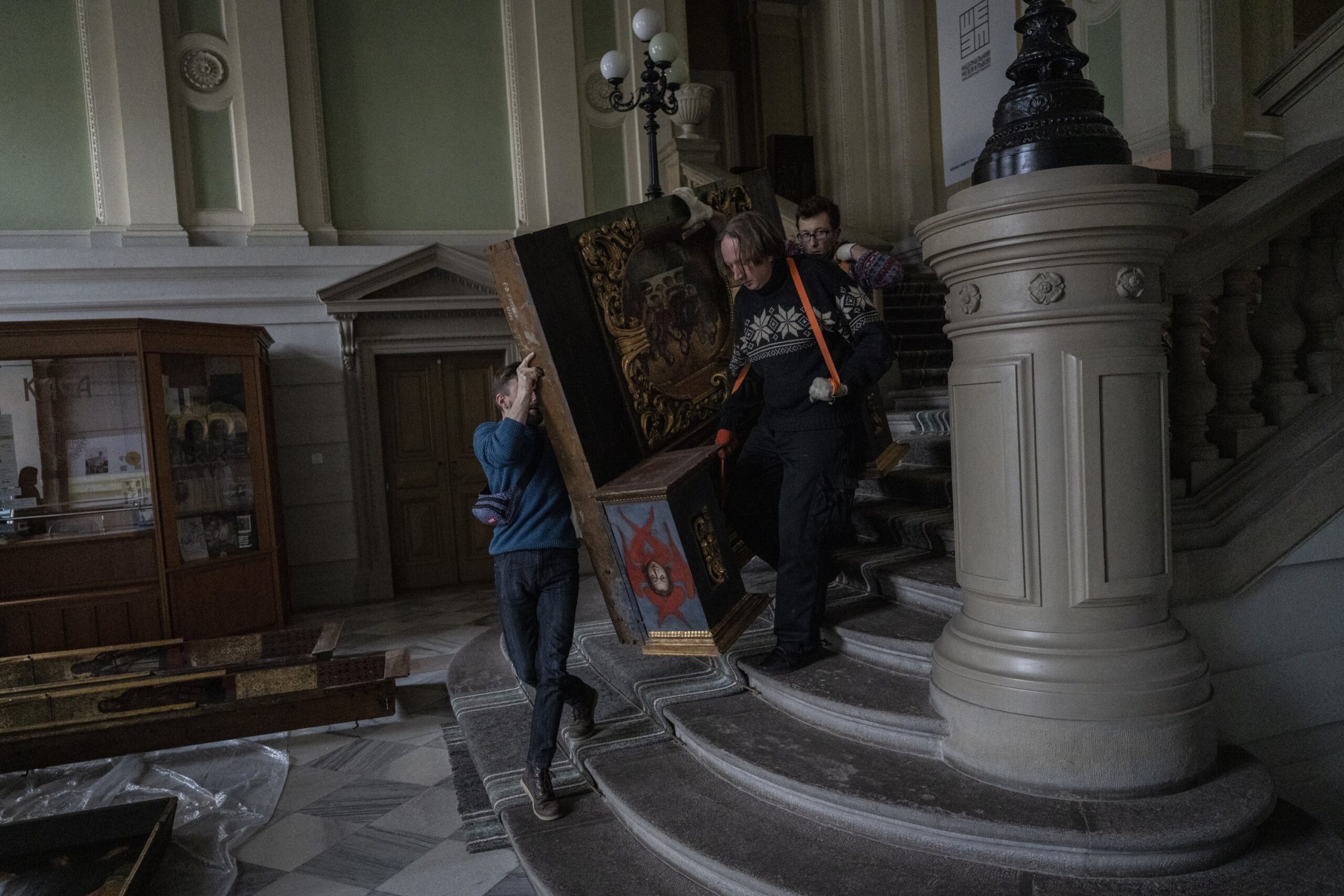
Another area of HERI’s activities is the preparation for loss and risk assessment, field expeditions to liberated cities and towns with damaged cultural infrastructure, museification of objects, and the collection of oral history. HERI has also conducted expeditions to the cities of Bucha, Borodyanka, Vyazivka and Kharkiv, documenting the destruction of civilian infrastructure and cultural facilities, collecting valuable artefacts and preserving them for further research and exhibitions.
In this context, some of the most common challenges cultural heritage workers face are the provision of a high-speed response to the humanitarian needs of museum staff in the occupied or surrounding territories, in areas of active warfare; the constant change on the war front and the situation in the affected locations; lack of unambiguously safe solutions for the evacuation of collection items; problematics of clear coordination of actions and agreements: museum – government authority – MCIP – law enforcement and military structures – civil protection authorities; the need to coordinate with the armed forces at all levels; and the need for coordination within the country and from abroad.
Click here to find more on the HERI initiative.
Reflection Question: Having explored HERI website to find more of their initiatives, which ones do you think are most important? Choose three initiatives, note them down in your reflective diary and explain why you consider them as most important.
3.3 European CHOs and Institutions’ response to the crisis
In response to the Ukrainian crisis, European cultural organisations and institutions have since mobilised their forces in order to support their Ukrainian colleagues in protecting and preserving their cultural heritage. The Network of European Museum Organisations (NEMO) expressed its solidarity with Ukrainian CHOs (NEMO statement, February 25, 2022) and has since engaged in collecting and monitoring initiatives carried out by European museums for Ukraine.
In order to categorise activities in the most structured way, NEMO has divided initiatives into sub-categories under the titles: Support on the ground in Ukraine, Storage and Housing, Job offers, Donations, Education and Exhibitions and Statements.
Click here to find out more about NEMO’s solidarity initiative.
The European Creative Hubs Network has launched a separate online platform that collects initiatives organised for Ukraine in Europe and worldwide, connecting each field of the wider cultural sector. The platform was accessible until April 2022 (currently inaccessible) and anyone could register their initiative, which would be later checked and published on the platform. Moreover, the European Creative Hubs Network runs the OPEN DOORS initiative with the aim of providing workspaces to Ukrainian creative professionals, while it has organised a series of talks under the theme of welcoming Ukrainian refugees.
You can check all those initiatives here.
Another digital space set up to gather activities and events addressing the needs of the Ukrainian cultural heritage sector and its people is the #CultureForUkraine initiative by Culture Action Europe (CAE) network. The #CultureForUkraine platform works in a similar way to the Creatives Unite platform, as it gives individuals the opportunity to add their initiative on the platform under a specific categorisation of events, namely Resources for Ukrainian artists and cultural workers, Residencies, General resources, Statements, Donations & Petitions.
You can find out more in the #CultureForUkraine crowd initiative here.
Reflection question: Do you think that initiatives such as those organised by European Creative Hubs Network or Culture Action Europe are necessary in times of the war? Note down your answer in the reflective diary.
3.4 CHOs engaging citizens
Naturally, the first cultural institutions that adopted the call to offer their support to Ukrainian colleagues and people were those in neighbouring countries, especially Lithuania and Poland. In the Lithuanian case, one of the many initiatives was organised by the Mo museum which has since engaged in various activities, from crowdfunding, film screenings, a lecture by psychotherapist Eugenijus Laurinaitis, Ukrainian poetry readings and a collection of MO books for Ukrainian children.
The MO museum initiatives are a good example of how museums can contribute in times of crises in the most diverse and creative ways by expanding their activities and incorporating a variety of means (financial aid, cooperation with art museums abroad) and disciplines (e.g., psychology, poetry) in order to maximise their impact on the population in need of support.
Check here for more on MO’s initiatives for Ukraine.
In neighbouring Poland, one of the first museums that was mobilised to offer assistance to Ukrainians arriving in the country was the Archaeological Museum in Gdańsk. The Museum decided to transform individual support offered by its employees into long-term institutional assistance. In this context, it offers free entrance for Ukrainians, free educational activities for Ukrainian families in its exhibition facilities as well as art-workshops for Ukrainian children. The Archeological Museum of Gdańsk is living proof of how culture can be a remedy and unite people, especially in difficult times.
Click here to find out more on the Archaeological Museum in Gdańsk’s response to the Ukrainian crisis.
One of the most innovative ways to track and monitor Ukrainian cultural and natural heritage is the BackUp Ukraine initiative carried out by polycam in partnership with Blue Shield Danmark, UNESCO and Virtue Futures Innovation Lab. The aim of this initiative is to give Ukrainian citizens still in Ukraine the opportunity to act as archivists by scanning monuments as 3D models only using their phones. Having scanned a building, a monument or any work of art, they can then store the 3D model in an open access, online archive. This way, by taking full advantage of the opportunities that new digital technologies can offer, people become themselves actors in the preservation and protection of their cultural heritage.
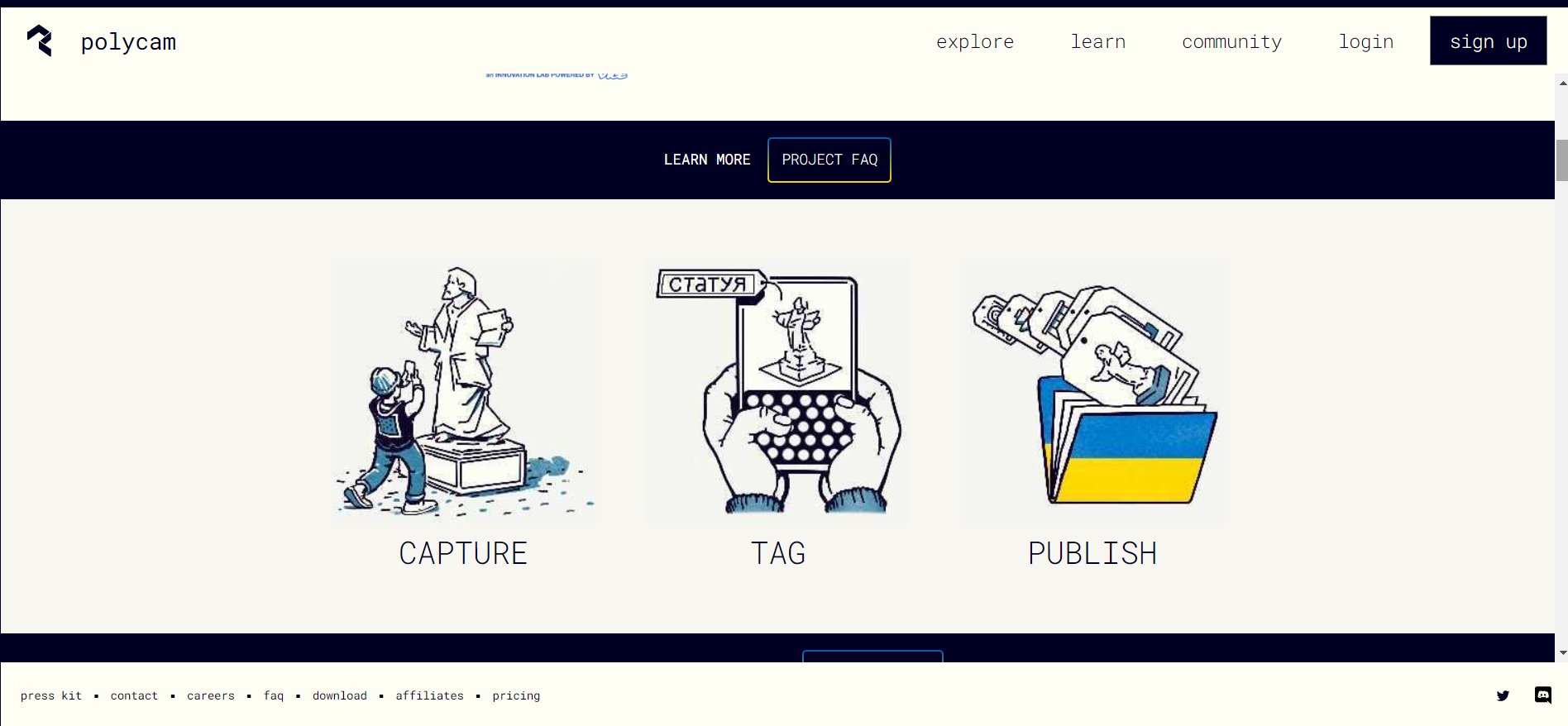
BackUp Ukraine initiative
Check out more on the BackUp Ukraine initiative by clicking here.
Finally, another example of how open innovation can contribute to the preservation of cultural heritage in times of crisis is the campaign organised by UNESCO in partnership with the Global Digital Library, UNHCR, Norad, the EdTech Hub, the World Bank’s global EdTech team, H5P, Curious Learning and other partners under the title “Translate a Story Ukraine”. The Translate a Story initiative was first launched during the COVID-19 pandemic as a tool to foster remote early age reading. The Translate a Story Ukraine initiative is developed in the context of the current war setting. The overall aim of this campaign is to translate 100 early grade books into Ukrainian through crowdsourcing, namely volunteers from all around the world who can speak the Ukrainian language. Volunteers will also be needed to review the translations so that the quality of the books will be preserved.
The Translate a Story Ukraine campaign is a great example of how tangible and intangible cultural heritage can be preserved and handed over to future generations, as stories, especially old ones, are a fundamental part of the cultural heritage of every community.
Reflection Question: Which of the three initiatives mentioned in 3.3 would you like to engage in and why? Note down the answer in your reflective diary.
Unit 3 Quiz:
You are now about to enter our last-but-one unit. It focuses on the theme of open innovation in academia-society cooperation. Please remember to have your reflective diary at hand to note your thoughts and answers to reflection questions which, as you already know, are posted in different places in the unit. As previously explained, this diary will enrich your educational journey and will become an invaluable resource for the future for you to refer back to what you have learnt throughout the whole module.
Further readings:
- Akinsha, K. (March 25, 2022), Culture in the crossfire: Ukraine’s key monuments and museums at risk of destruction in the war, The Art newspaper, https://www.theartnewspaper.com/2022/03/25/ukraine-culture-in-peril
- HERI initiative, https://drive.google.com/file/d/1d6cT3pcNfZjyXnRryG-yhMxleI0NEGbG/view
- ICOM. (March 9, 2022), Ukraine: ICOM recalls the role of culture and museums in building lasting peace, https://icom.museum/en/news/ukraine-icom-recalls-the-role-of-culture-and-museums-in-building-lasting-peace/
- ICOMOS. (March 1, 2022), The Wolrd Heritage city of Kyiv is in imminent danger, https://www.icomos.org/en/78-english-categories/105787-kiev
- Mo Museum, Lithuania, #MostandswithUkraine initiatives, https://mo.lt/en/ukraine/
- NEMO. (February 25, 2022), #SolidarityWithUkraine, https://www.ne-mo.org/fileadmin/Dateien/public/NEMO_Statements/NEMO_Statement_Ukraine_250222.pdf
- UNESCO. (February 24, 2022), UNESCO’s statement on the recent developments in Ukraine, https://www.unesco.org/en/articles/unescos-statement-recent-developments-ukraine
- UNESCO. (April 12, 2022), UNESCO and NORAD join forces with partners to translate storybooks for Ukrainian children, https://www.unesco.org/en/articles/unesco-and-norad-join-forces-partners-translate-storybooks-ukrainian-children
- BackUp Ukraine initiative, https://poly.cam/ukraine
- CultureForUkraine initiative, https://coda.io/@cultureactioneurope/solidarity-with-ukraine

